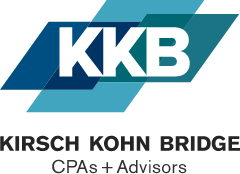Insights
Achieving the right balance of working capital
May 24th, 2023/Tax
Working capital — the funds your company has tied up in accounts receivable, accounts payable and inventory — is a critical performance metric. During times of rising inflation and interest rates, managers search for ways to free up cash and eliminate waste. However, determining the optimal amount of working capital can sometimes be challenging.
Balancing act
The amount of working capital your company needs depends on the costs of your sales cycle, upcoming operating expenses and current repayments of debts. Essentially, you need enough working capital to finance the gap between payments to suppliers and creditors (cash outflows) and payments from customers (cash inflows).
Having too much working capital on the balance sheet can drain cash reserves, requiring a company to tap into credit lines to make ends meet. In addition, money tied up in working capital can detract from growth opportunities and other spending options, such as expanding to new markets, buying equipment, hiring additional workers and paying down debt.
But having too little working capital to act as a buffer can also create problems — as many companies learned from supply chain shortages during the pandemic. Ongoing geopolitical uncertainty has caused some companies to scale back on just-in-time inventory practices, causing working capital balances to increase.
3 keys to reducing working capital
Working capital best practices vary from industry to industry. Here are three effective ways to manage working capital more efficiently:
1. Expedite collections. Possible solutions for converting accounts receivable into cash include the following: tighter credit policies, early bird discounts, collection-based sales compensation and in-house collection personnel. Companies also can evaluate administrative processes — including invoice preparation, dispute resolution and deposits — to eliminate inefficiencies in the collection cycle.
2. Trim inventory. This account carries many hidden costs, including storage, obsolescence, insurance and security. Consider using computerized inventory systems to help predict demand, enable data-sharing up and down the supply chain and more quickly reveal variability from theft.
It’s important to note that, in an inflationary economy, rising product and raw material prices may bloat inventory balances. Plus, higher labor and energy costs can affect the value of work-in-progress and finished goods inventories for companies that build or manufacturer goods for sale. So rising inventory might not necessarily equate to having more units on hand.
3. Postpone payables. By deferring vendor payments, when possible, your company can increase cash on hand. But be careful: Delaying payments for too long can compromise a firm’s credit standing or result in forgone early bird discounts. Many companies have already pushed their suppliers to extend their payment terms, so there may be limits on using this strategy further.
For more information
There’s no magic formula for reducing your company’s working capital requirements, but continuous improvement is essential. Contact us for help evaluating working capital accounts and brainstorming solutions to minimize working capital without compromising supply chain relationships.
© 2023
For more helpful tax and accounting articles, or to sign up for our newsletter, please visit our KKB Insights page. If you have any questions, please contact us.
TAGS: Tax


